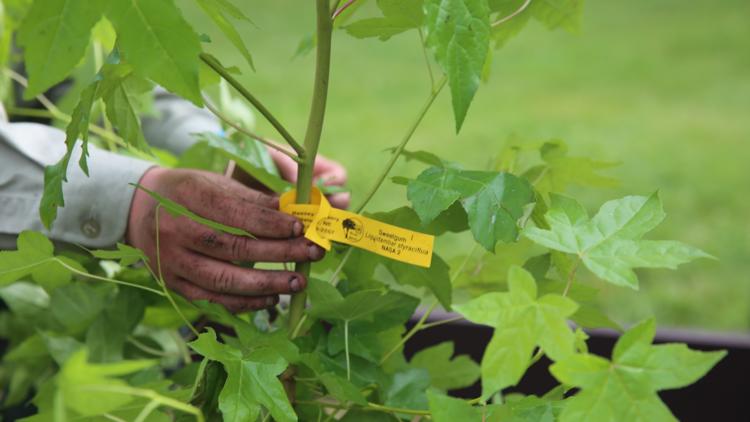COLUMBUS, Ohio — The Wayne National Forest planted a Moon Tree sapling last month that spent six weeks in space aboard the Orion spacecraft.
The sapling was planted as part of an initiative between NASA and the U.S. Forest Service. It was just one of about 1,500 seedlings that were on the unmanned Orion spacecraft.
NASA’s Artemis I mission launched on Nov. 16, 2022, and was the first in a series of missions to enable human exploration on the moon, according to a release.
Forest Supervisor Lee Stewart said the Moon Tree symbolizes the park’s efforts to be a forward-thinking organization that values collaboration and innovation.
“The Moon Tree reminds us that stewarding the whole often starts as small as a seedling, and with innovation, dedication, and persistence, anything is possible,” Stewart said. “We’re honored to be part of such a unique scientific partnership.”


The Moon Tree sapling is a sweetgum, which is native to southeast Ohio. Some of the other seedlings aboard included sycamores, Douglas-firs, loblolly pines and giant sequoias.
“Ohio has a long and rich history of aviation and aerospace exploration, including the Wright Brothers and John Glenn, who have called the state home,” Athens Ranger District Silviculturist Lily Zahor said. “The Moon Tree connects two separate agencies that people wouldn’t appreciate natural resources and natural wonders.”
The forest requests that visitors admire the Moon Tree respectfully. Fencing and wire mesh will prevent wildlife and landscape maintenance activities from damaging the sapling.
Moon Trees began with the Apollo 14 mission in 1971, when Command Module Pilot Stuart Roosa brought along approximately 400 to 500 loblolly pine, sweetgum, Douglas-fir, redwood and sycamore seeds.



